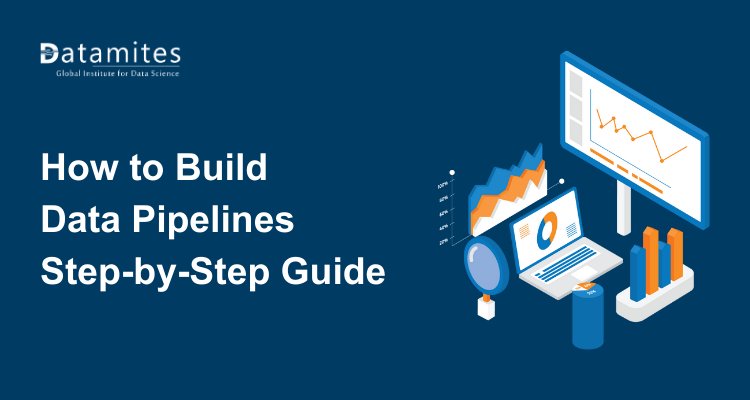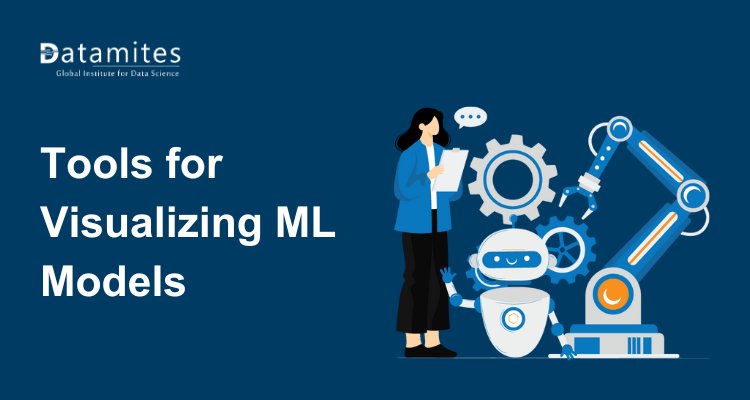How to Build Data Pipelines: Step-by-Step Guide
A data pipeline moves raw information from where it’s created to where it can be analyzed, cleaned, and used. This guide walks you through each stage, from collecting and transforming data to storing and delivering it reliably.

If you’ve ever worked with analytics, machine learning, or any data-driven product, you know raw data isn’t very useful on its own. It needs to be collected, cleaned, transformed, and delivered to where it can actually be used. That’s where data pipelines come in.
In the simplest terms, a data pipeline is a system that moves data from one place to another, applying transformations along the way. Whether you’re pulling in sales data from an API, merging it with CRM records, or feeding it into a real-time dashboard, you’re essentially running a pipeline.
Knowing how to build data pipelines is a core skill in modern data engineering. Without them, analytics teams stall, business decisions are delayed, and automation breaks down. In this guide, we’ll walk through the key concepts, components, and a practical, step-by-step process for building pipelines that are reliable, scalable, and maintainable.
What is a Data Pipeline?
A data pipeline is a set of steps that move and process data from a source to a destination like a data warehouse, data lake, or live dashboard. Along the way, the data can be transformed, cleaned, aggregated, or enriched to support analytics and applications. ETL (Extract, Transform, Load) transforms data before loading it, while ELT (Extract, Load, Transform) loads it first, then transforms it in storage, each suited to different workloads and setups.
According to Grand View Research, the global data pipeline tools market was valued at USD 12,086.6 million in 2024 and is projected to reach USD 48,331.7 million by 2030, growing at a 26% CAGR from 2025 to 2030. That steep growth curve underscores how essential pipelines have become for managing the sheer volume, variety, and speed of modern data. As businesses rely more heavily on real-time insights and AI-driven decision-making, these pipelines aren’t just infrastructure they’re the backbone of data-driven operations.
Key Components of a Data Pipeline
A good data pipeline architecture isn’t just a single tool or script, it’s a set of connected layers, each doing a specific job to move and prepare data. Here’s the breakdown.
- Data Sources: Databases, APIs, event streams, or files. Each has its own format, frequency, and quirks.
- Ingestion Layer: Brings data in via batch processing or real-time data processing. Tools: Apache Kafka, AWS Kinesis, database replication.
- Transformation Layer: Cleans, enriches, and reshapes data through the ETL process or ELT. Common tools: dbt, AWS Glue, Spark.
- Storage Layer: Holds processed data for analysis. Options:
- Data warehouse (Snowflake, Redshift, BigQuery)
- Data lake (S3, Azure Data Lake)
- Hybrid setups combining both.
- Consumption Layer: BI dashboards, machine learning models, or APIs.
- Orchestration & Automation: Tools like Apache Airflow coordinate jobs, handle retries, and keep the data workflow running smoothly.
When you think of these components as modular, it’s easier to scale, swap tools, or adapt your data workflow to new requirements.
Refer to these articles:
- Beginner’s Guide to Data Collection in Data Science
- What Is Regression Analysis in Data Science
- Does Data Science Require Coding
Step-by-Step Guide: How to Build a Data Pipeline
Let’s walk through the process from planning to deployment so you can design a pipeline that’s both reliable and scalable.
Step 1: Define Business Requirements and Data Sources
Start with the “why.” What questions need answering? What reports, dashboards, or models will use this data? List your data sources, databases, APIs, SaaS platforms, logs, and note their formats, update frequency, and data quality.
Step 2: Choose the Right Data Pipeline Architecture
Decide between batch processing and real-time data processing. Batch is simpler and cheaper for daily or hourly data loads. Real-time is essential for use cases like fraud detection or live personalization.
Step 3: Set Up Data Ingestion
Your ingestion layer can use:
- API connectors to pull data from web services
- Streaming platforms like Kafka for continuous data
- Database replication tools for syncing transactional systems
For a cloud data pipeline, managed ingestion services like AWS Kinesis or Google Pub/Sub can save time and reduce maintenance.
Step 4: Data Transformation
Here’s where the ETL process or ELT comes in. Apply:
- Data cleaning: Remove duplicates, handle missing values
- Data enrichment: Add lookup values, join with reference datasets
- Standardization: Ensure consistent formats, units, and naming
Tools like dbt or AWS Glue make data transformation more maintainable and testable.
Step 5: Data Storage
Pick the right storage based on cost, query speed, and scalability:
- Data warehouse: For structured, analytical queries (e.g., Snowflake, BigQuery, Redshift)
- Data lake: For large volumes of semi-structured or unstructured data
- Hybrid: Store raw data in a lake, curated data in a warehouse
Step 6: Orchestration and Automation
You need an orchestrator to schedule jobs, handle dependencies, and manage retries. Apache Airflow is a go-to for many teams. For serverless environments, AWS Glue workflows can manage automation with less infrastructure overhead.
Step 7: Monitoring and Maintenance
Pipelines break, schemas change, APIs fail, storage fills up. Set up monitoring for:
- Job failures and delays
- Data quality issues
- Unexpected changes in volume or schema
Tools like Airflow’s monitoring UI, Datadog, or custom alerting can help.
Refer to these articles:
- Mastering Data Wrangling in Data Science
- The Rise of Data Science in the Agriculture Industry
- Why Do You Need Data Science for Business
Best Practices for Building Reliable Data Pipelines
A good pipeline isn’t just functional, it’s dependable, even when things go wrong. Here’s what separates a quick proof-of-concept from something you can trust in production:
Design for Scalability
Plan for more data than you have today. That means choosing tools and architectures that handle growth without a full rebuild. Cloud data pipeline services like AWS Glue or BigQuery scale automatically, but even on-prem systems can be designed with horizontal scaling in mind.
Build Fault Tolerance In
Failures happen, network drops, API outages, schema changes. Your pipeline should retry automatically, skip bad records without crashing, and checkpoint progress so you don’t have to reprocess everything from scratch.
Automate Data Quality Checks
Broken data is worse than no data. Add validation steps to catch missing fields, unexpected formats, or unusual value ranges. Tools like Great Expectations or custom SQL tests help ensure downstream systems get clean data.
Secure the Pipeline End-to-End
Encrypt data both in transit (TLS) and at rest. Control access with least-privilege permissions. Log who accessed what and when. For sensitive datasets, consider tokenization or anonymization before storage.
Keep Transformations Reproducible
Whether you’re using dbt, Spark, or SQL scripts, version control your transformation code. Document assumptions and business rules so anyone can rerun and verify them later.
Monitor Everything
Don’t just wait for a user to tell you something broke. Use monitoring tools like Prometheus, Grafana, or Datadog to track pipeline health, job runtimes, and error rates. Set up alerts so you know about problems before stakeholders do.
Document Your Architecture and Processes
A reliable pipeline is one that someone else can understand and maintain. Keep diagrams, data flow descriptions, and operational runbooks up to date.
Following these practices won’t guarantee a perfect system, but it will make your pipelines much more resilient, easier to scale, and far less stressful to operate.
Refer to these articles:
Common Challenges and How to Overcome Them
Even the best-designed data pipelines will hit bumps. Knowing where problems tend to appear, and how to address them, saves hours of firefighting.
- Latency: Dashboards or analytics run slowly because of inefficient queries or underpowered infrastructure. Optimize queries, add indexes, and scale processing where needed.
- Schema Changes: When source systems change fields or formats, pipelines can break. Use schema validation and build transformations that can handle optional or extra fields.
- Data Loss: Failed jobs or network issues can drop records. Add retries, checkpoints, and row-count checks to catch problems early.
- Scaling Issues: Pipelines that work with small data may stall under heavy loads. Choose scalable tools and break processing into parallel tasks.
- Lack of Monitoring: Without alerts, failures can go unnoticed. Track job metrics and set up notifications for anomalies.
Addressing these challenges proactively will keep your data workflow stable and help you avoid painful downtime when the business depends on timely insights.
Building a pipeline isn’t just about shuttling data from one place to another. It’s about designing a dependable, automated data workflow that fuels analytics, machine learning, and real-time decision-making. The best approach is to start small, connect a single source, set up a simple batch process, and refine it over time. As your expertise grows, you can expand into real-time processing, advanced automation, and integrating more sophisticated data tools.
Mastering how to build data pipelines puts you in control of delivering accurate, timely data that your organization can rely on. Whether you’re taking an offline data science classes in Pune or learning online, becoming skilled at handling missing values, fixing inconsistencies, and automating workflows is non-negotiable. These skills, combined with a disciplined approach to pipeline design, form the foundation for trustworthy insights and long-term success in data engineering.
Among the top institutions shaping data science education in India, DataMites Institute stands out as a leading choice for aspiring professionals. Recognized by TechGig as one of the best AI and Data Science institutes in the country, DataMites is known for its industry-aligned curriculum, hands-on approach, and internships that turn classroom learning into real-world experience.
Their Certified Data Scientist programs, accredited by both IABAC and NASSCOM FutureSkills, give learners comprehensive training in essential tools, machine learning, and advanced analytics, skills that employers actively seek in today’s data-driven market.
For those who prefer offline learning, DataMites offers offline data science training in Bangalore, Hyderabad, Chennai, Pune, Ahmedabad, Coimbatore, and Mumbai. If you want maximum flexibility, their online courses deliver the same quality to learners worldwide.
Their programs cover industry-relevant fields like AI, machine learning, data analytics, Python, deep learning, data engineering, and more, giving both beginners and experienced professionals access to practical, job-ready skills. Whether you’re starting your data science journey or pushing it further, DataMites combines hands-on expertise with recognized credentials to help you stand out in a competitive field.





